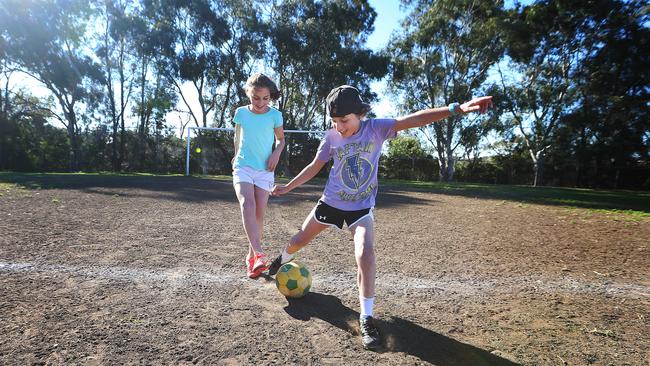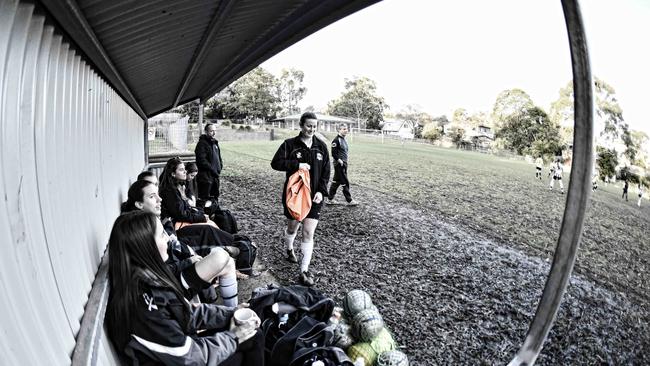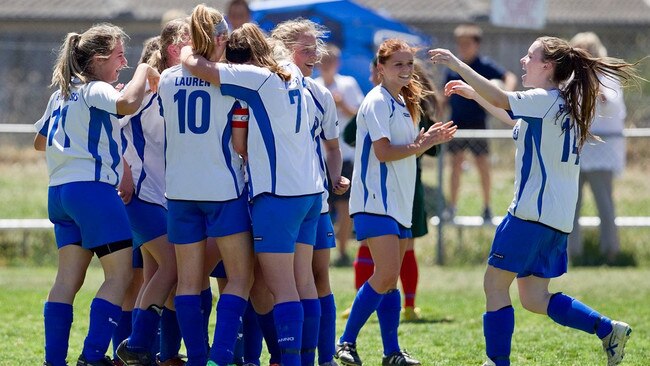FFA to lobby for funding increase to save grassroots football
With grassroots football bursting at the seams, a concerted lobbying campaign is to begin at all levels of government seeking $300m of funding to add and improve pitches across the country.
It’s the sport played by more children across Australia than any other — but too often on pitches that are unlit, undrained and overused.
Now, with grassroots football bursting at the seams, a concerted lobbying campaign is to begin at all levels of government seeking to bridge a $500m funding gap by adding and improving hundreds of pitches across the country.
As association officials put caps on registration numbers due to a shortage of appropriate facilities, new research has revealed the backlog of upgrades and investment that means an average of more than 300 players using each pitch in some areas.

Football Federation Australia officials will begin a tour of state and the federal governments this week, armed with an audit of facilities across the country and aiming to show the code is under-resourced compared with its rivals.
As it stands, football receives $37 of government funding per participant while each rugby participant gets $113, NRL $110, AFL $109 and cricket $55.
The windfall from broadcast revenue reveals an even greater discrepancy, with each football participant getting $34 and each NRL counterpart receiving a whopping $1,539.
Every match of the 2018/19 Hyundai A-League LIVE. Get it all on Foxtel

The Football NSW audit showed more than 350,000 players are registered to play football across NSW this year, on 2,284 pitches — each of which is played on by an average of 155 players.
According to the data, a third of pitches have no lighting, while almost half have no drainage and/or irrigation, leading to significant numbers of training sessions and matches cancelled in bad weather.
But of equal concern is the lack of new pitches to cater for increased demand, with participation numbers for football rising every year.
Female football numbers in particular are rising by 8 per cent per year, but local officials say they have nowhere to house the extra players.

“I don’t have enough fields to play on,” said general manager of the Sutherland Shire Football Association Jeff Stewart.
“We do have an eligibility requirement to register to play football in Sutherland Shire — you must be a resident, presently going to school there or have played for one of our clubs in the past.
“If we had 20,000 players I would suggest we may have to start turning away local residents.”
They’re not far short off that threshold now.
Last year the Shire had 18,692 — of which about one-third were female — squeezed onto 61 fields at an average of 306 players per field.
Some of those fields are under-utilised because of the steep financial outlay required to make them more playable.
“We have one field, for example, where the goalkeeper’s feet at one end are higher than the goalkeeper’s head at the other end,” Stewart said.
“We play games on that field — we have to, because we have to play games on every bit of green grass we can.”
Inquiries have been made about levelling it out and refurbishing another smaller one next to it, but the association has been quoted about $4 million because of nearby sewage and stormwater lines.
Similar problems have long been festering in the Canterbury district, where decades of neglect in Sydney’s chock-a-block inner west has left structurally unsound facilities and outdated amenities, particular catering for female participation.

Canterbury District Soccer Football Association chief executive Ian Holmes said his board has been discussing capping registrations at a total 17,000 across the 27 clubs.
“It’s not a matter of if it’s going to happen, it’s going to start this year because there’s no more space,” Holmes said.
“The infrastructure cannot cope.
“We’re really jammed in, and given the neglect and lack of capital invested in community sporting facilities the fields start to deteriorate.
“Therefore the clubs have to say they can’t take anymore. They’re basically at the point where they have to do it because there’s no more space.”


